Title : Identification of airborne fungus in residential environments that contribute to allergic bronchopulmonary asthma: Case report
Abstract:
Allergic bronchopulmonary mycosis (ABPM) is a pulmonary hypersensitivity disease to various fungi. The most common causative Aspergillus fumigatus, however, there are other saprophyte fungi that have been identified that cause ABPM such as Candida albicans, Bipolaris spp , Schysophillum commune, Alternaria, Cladosporum and Exophialia pisciphila. These fungi trigger types I and III hypersensitivity reactions, leading to manifestations such as eosinophilia, high IgE levels, and specific IgE and IgG antibodies against fungi. Also presents with recurrent transient radiographic infiltrates and bronchiectasis, there is a potential lung function decline, lung fibrosis, and irreversible damage if not diagnosed and treated early(1). Treatment typically involves systemic corticosteroids and antifungal drugs. Recurrences are common, and prolonged treatment can lead to adverse effects and drug resistance.
Given the importance of the presence of airborne microorganisms intra domiciliary and the frequency of patients diagnosed with asthma attending the INER, we aimed to search for fungi isolated in situ in the homes of patients with suspected allergic bronchopulmonary asthma. This study involved one patient with suspected ABPM without documented allergic sensitivity. Allergic sensitivity testing through cutaneous (skin prick), intradermal methods, and precipitin profiling was performed in the patient to identify immune responses to specific allergens.
The approach for identification of fungal allergens was made as follows: 1) Air sampling using opened Petri dishes with malt extract agar to capture and culture fungi from indoor air, 2) standard mycological methods for identified fungi, 3) Western Blot 1D to serum’s patient and 4) DNA extraction, PCR and sequencing for identification of each genus and species. The colonies grown in the cultures were analyzed by optical microscopy and the genus and species of the isolates was determined by the DNA amplification of the Internal Transcribed Spacer (ITS) region of nuclear ribosomal DNA (ITS). From the positive precipitin reactions the antigen was recovered,
The diagnosis of allergic bronchopulmonary mycosis caused by Rhizopus stolonifer and Penicillium crustosum was confirmed in the patient through clinical examination, positive precipitins, confirming immunoreactivity towards the patient's serum by Western Blot 1D and by comparing the sequence of the amplified ITS in the NCBI Database.
Our patient received oral glucocorticoid for 12 weeks with good clinical response and a 25% reduction in total IgE levels.
In conclusion, saprophytic fungi found indoors can play a significant role in the development and severity of allergic bronchopulmonary asthma, particularly through mechanisms involving sensitization and immunomodulation.



